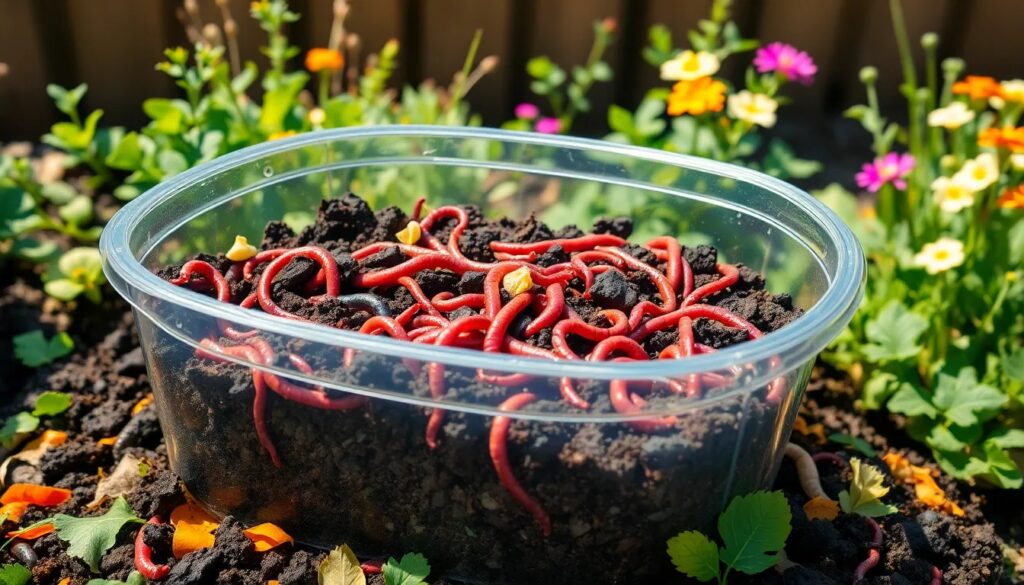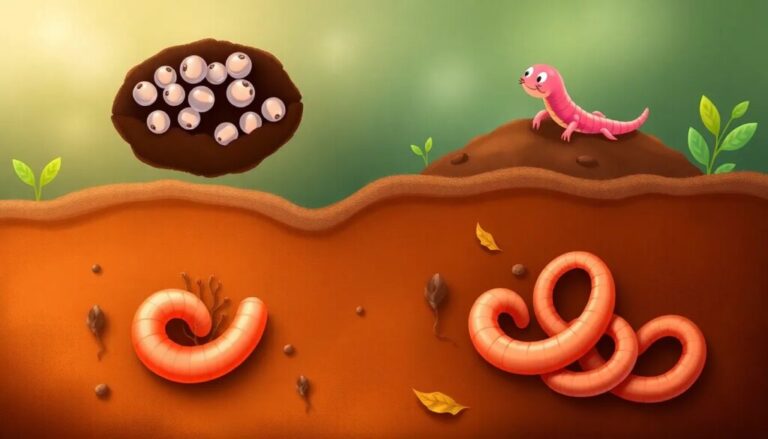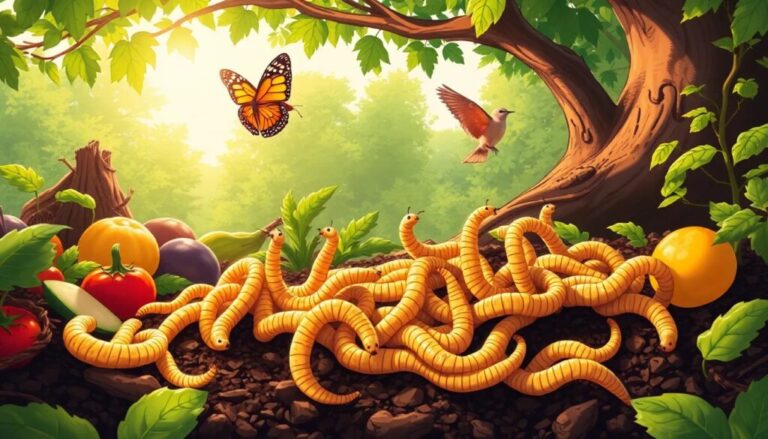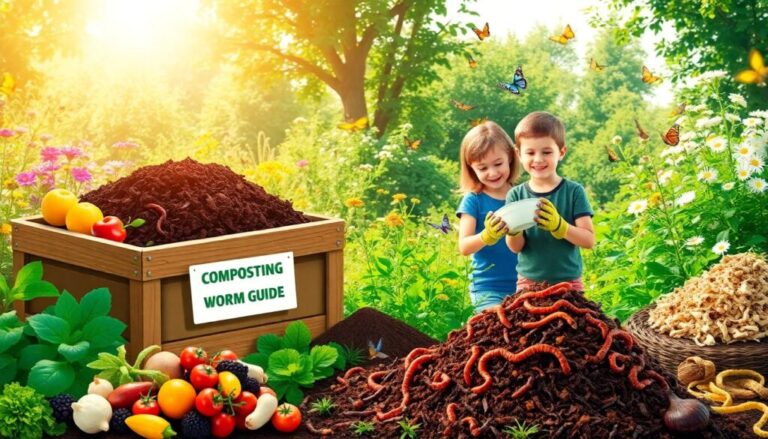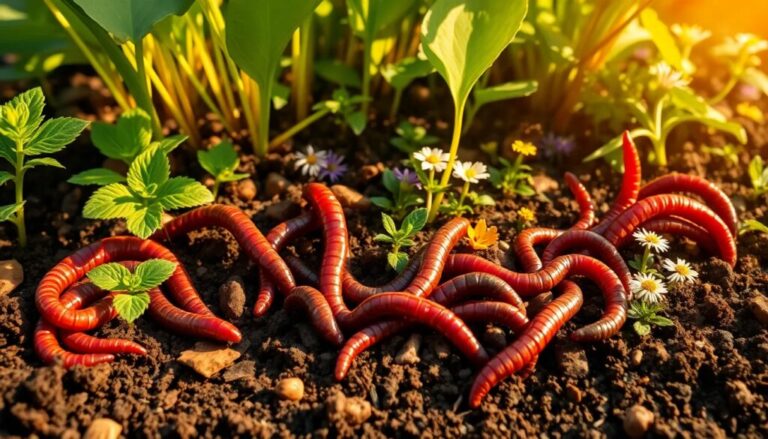Can you keep red wigglers and nightcrawlers in the same bin?
Composting with worms, especially red wigglers and nightcrawlers, is an effective technique for transforming organic waste into nutrient-rich compost. Although both species can coexist in the same container, there are challenges due to their different needs and habits.
In this article, we will explore the feasibility of keeping red wigglers and nightcrawlers together, their differences, and the optimal conditions for their coexistence.
Keeping red wigglers and nightcrawlers together: what you need to know
The idea of combining red wigglers (Eisenia fetida) and nightcrawlers (Lumbricus terrestris) in a single bin may be appealing, but it is important to understand their behavior and care requirements. While red wigglers thrive in warm, nutrient-rich environments, nightcrawlers prefer cooler climates and tend to burrow into the soil.
Before deciding whether you can keep red wigglers and nightcrawlers together, consider the following points:
- Red wigglers are better suited for indoor composting.
- Nightcrawlers need space to burrow and are not comfortable in confined spaces.
- Differences in their food preferences can complicate the bin’s diet.
Coexistence may be possible, but it will require constant attention and adjustments to the bin environment.
Can multiple worm species coexist in one bin?
Mixing different worm species can offer opportunities and challenges in composting. It is essential to understand that not all species are compatible. While red wigglers and European nightcrawlers (Eisenia hortensis) can coexist, Canadian nightcrawlers (Lumbricus terrestris) are not suitable for small containers.
Here are some factors to consider:
- Red wigglers feed mainly on food scraps and cardboard, while nightcrawlers feed on organic matter in the soil.
- Nightcrawlers are more solitary and prefer larger spaces.
- Temperature plays a crucial role; red wigglers thrive at higher temperatures.
Ultimately, the decision to mix worm species will depend on your composting goals and the space you have available.
What are the differences between red wigglers and nightcrawlers?
The differences between red wigglers and nightcrawlers are significant and affect how they are handled in composting. Knowing these differences can help you make informed decisions about keeping them together.
- Red wigglers: They prefer a warm, moist environment, are ideal for vermicomposting, and feed on food scraps.
- Nightcrawlers: They tend to be larger and prefer a cooler environment. They feed mainly on organic matter in the soil.
- Red wigglers reproduce more quickly, which can be beneficial for composting.
Understanding these differences is crucial if you decide to keep both species in the same bin. Success will depend on how you manage their needs.
Why should you consider mixing worm species in your bin?
Mixing worm species can offer several benefits for composting. Different species can complement each other’s abilities and improve the efficiency of the composting process.
Some advantages of mixing red wigglers and nightcrawlers include:
- Increased biological diversity in the bin, which can improve soil health.
- Improved decomposition of organic waste, as each species has unique food preferences.
- The opportunity to observe interactions between species, which can be educational.
However, it is vital to balance the conditions in the bin to ensure that both species thrive.
What are the best conditions for red wigglers and nightcrawlers?
Optimal conditions for keeping red wigglers and nightcrawlers together are key to their success. Here are some guidelines to follow:
- Temperature: Keep the bin between 60-75°F (15-24°C) so that both species are comfortable.
- Humidity: Make sure the contents of the bin are moist, but not soggy.
- Aeration: Provide enough air to the substrate to prevent compaction.
In addition, it is important to monitor conditions regularly to ensure that both species are adapting properly.
Signs that red wigglers and nightcrawlers are adapting to each other
Identifying whether your red wigglers and nightcrawlers are adapting to their shared environment can be an indication that they are comfortable. Here are some signs to look for:
- Active movement: If both species are moving freely and showing no signs of stress.
- Food consumption: A decrease in food scraps indicates that they are eating properly.
- Reproduction: If you see eggs or young worms, this is a good sign of adaptation.
Paying attention to these details will help you better manage your bin and ensure the well-being of your worms.
Final thoughts on keeping red wigglers and nightcrawlers together
In conclusion, the question can you keep red wigglers and nightcrawlers in the same bin? has a nuanced answer. It is possible, but it requires careful consideration of the needs of both species.
If you decide to mix red wigglers and nightcrawlers, be sure to establish optimal conditions and keep an eye on their interactions. Ultimately, the success of vermicomposting will depend on your ability to manage the bin environment and provide what each species needs to thrive.
To learn more about vermicomposting and best practices for worm care, we recommend watching this informative video.o:

